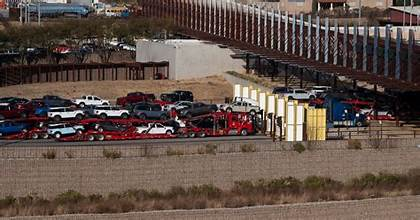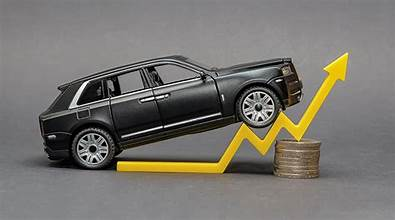The prices of cars in the U.S. are going up again. This time, the reason is the new tariffs announced by the government. These new tariffs are mainly targeting car parts and electric vehicles (EVs) imported from other countries, especially China.
American customers, carmakers, and dealers are all reacting strongly to the rising costs. While the aim of the tariffs is to support local industries, they are also making new and used cars more expensive for everyone.
In this article, we will explain what these new tariffs are, how they affect car prices, and what you can do as a buyer or investor.
What Are the New Tariffs on Cars?
The U.S. government has decided to increase tariffs on a wide range of imported products, including cars and car parts. The main target is China, where many electric vehicles and auto parts are made.

These new tariffs include:
- 100% tariff on Chinese electric vehicles
- 25% tariff on EV batteries and battery parts
- 25% tariff on some steel and aluminum used in cars
The reason behind these tariffs is to reduce dependency on foreign products and encourage more manufacturing in the U.S.
Source: Learn more about U.S.-China tariffs here
How Car Prices Are Rising
With the cost of parts going up, carmakers are adjusting their prices. Even American brands like Ford and GM are affected because many of their components come from abroad.
According to the latest industry reports:
- The average new car price has increased by 3% in just two months
- Electric vehicles have seen a price spike of up to 7%
- Used car prices are also rising because of the high demand
Many dealerships are warning customers that these prices could continue to rise in the coming months.
Why Electric Vehicles Are Hit the Hardest
EVs have been one of the fastest-growing car categories in the U.S. But they are also the most affected by the new tariffs.
Most EV batteries and related parts are imported from China. With a 25% tariff on those batteries, manufacturers have to spend more to make each vehicle.
A Tesla Model 3, for example, could now cost around $2,000 to $4,000 more depending on the model.
Read how EV makers are reacting to tariffs
How This Affects American Consumers
For the average American, this means fewer options and higher prices. Whether you want a fuel-efficient sedan or a clean-energy electric SUV, you’ll likely be paying more.

Auto loan rates are already high, and now the sticker price is rising too. Here are a few key effects on consumers:
- Higher monthly car payments
- Fewer affordable EV models
- Longer waiting times for imported parts
- Used car market becoming more competitive
Car experts suggest that buyers should act soon if they are planning to buy a car within this year.
Carmakers Caught in the Middle
While the goal of the tariffs is to protect American jobs, many U.S. carmakers are facing tough choices.
Companies like General Motors and Ford rely heavily on foreign parts, especially for their EVs. They now have to decide whether to:
- Raise prices for consumers
- Absorb the higher costs and reduce profit
- Shift production back to the U.S. (which can take years)
Industry groups like the Alliance for Automotive Innovation have asked the government to reconsider the tariffs, saying they might harm innovation and delay the growth of EVs.
More from the Auto Alliance here
Can the U.S. Auto Industry Compete Without Imports?
One of the government’s goals is to make the U.S. a leader in car and EV manufacturing. However, experts say that this transition cannot happen overnight.
Building battery factories, hiring skilled workers, and setting up supply chains takes years. In the short term, the tariffs may hurt both businesses and consumers.
The move might help in the long term if it leads to more local jobs and better supply security, but it also risks slowing down the EV adoption rate.
Tips for Car Buyers in 2025
If you’re planning to buy a car this year, here are a few things to keep in mind:
- Compare prices across multiple dealerships – Discounts may still be available.
- Look for federal or state EV incentives – They can reduce the overall cost.
- Consider certified pre-owned cars – These often come with warranties and are cheaper than new ones.
- Buy sooner rather than later – Prices may continue to increase as tariffs roll out fully.
- Research the origin of the car parts – Some vehicles may not be impacted as much if built locally.
What’s Next?
Industry analysts believe that car prices will remain high throughout the rest of the year. The effect of the tariffs may be fully visible by early 2026.
Unless trade talks lead to tariff relief, the automotive market may experience a shift — with more buyers opting for used cars, and more companies accelerating their U.S.-based manufacturing.
The Biden administration has said these moves are part of a broader strategy to build a stronger economy. Time will tell if the balance between protection and affordability can be achieved.
If you’re following car news, trade policy, or the U.S. economy, stay updated with the latest developments in tariffs and auto pricing trends.
Explore more car industry news here
Find updates on U.S. trade policy here
Also Read – U.S. and Saudi Arabia Sign Massive $1 Trillion Deal





